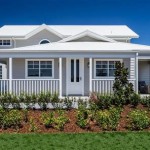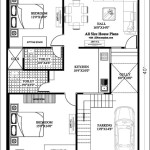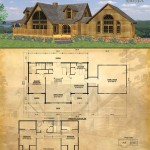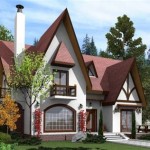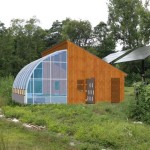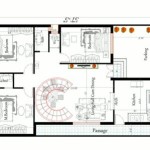Mass Housing Site Plans: Balancing Needs and Efficiency
Mass housing projects address the crucial need for affordable and accessible dwellings, particularly in rapidly urbanizing areas. A well-designed site plan forms the foundation of a successful mass housing development, impacting everything from resident well-being to environmental sustainability and long-term community viability.
Developing a comprehensive site plan for mass housing involves a complex interplay of factors. Considerations encompass density, building typology, infrastructure, community spaces, and environmental impact. The planning process necessitates a deep understanding of local regulations, community needs, and budgetary constraints.
Density plays a pivotal role in shaping the character and functionality of a mass housing development. High-density designs maximize land use and often incorporate high-rise structures. This approach can be particularly effective in urban centers where land is scarce and demand is high. However, careful consideration must be given to providing adequate green spaces, community facilities, and mitigating potential overcrowding.
Lower-density models, featuring townhouses or low-rise apartment buildings, offer more open space and a potentially greater sense of community. These designs can be more suitable for suburban locations or areas with lower population density. The choice of density often involves balancing the need for housing units with the desire for comfortable living environments.
Building typology is another critical aspect of mass housing site plans. The selection of appropriate building types depends on factors such as the target demographic, budget, and site characteristics. Options range from standardized, modular designs for cost-effectiveness to more customized structures that cater to specific community needs.
Effective integration of infrastructure is vital for the success of any mass housing project. This includes careful planning for water supply, sewage systems, electricity distribution, and telecommunications networks. Accessibility for emergency services and waste management are also crucial considerations. A well-designed infrastructure network supports the daily lives of residents and ensures the long-term sustainability of the development.
Community spaces play a significant role in fostering social interaction and a sense of belonging within mass housing developments. Parks, playgrounds, community centers, and recreational areas provide opportunities for residents to connect and build relationships. The inclusion of such spaces contributes to overall resident well-being and promotes a vibrant community atmosphere.
Environmental impact is a growing concern in mass housing development. Sustainable design principles can be incorporated into site plans to minimize the ecological footprint of the project. This includes strategies for energy efficiency, water conservation, and waste reduction. Utilizing green building materials and incorporating green roofs and landscaping further contribute to environmental sustainability.
Navigating local regulations and building codes is a crucial part of the site planning process. Zoning regulations, building permits, and environmental impact assessments are essential components that must be addressed. Collaboration with local authorities and community stakeholders is vital to ensure compliance and gain necessary approvals.
Community engagement plays a valuable role in shaping mass housing projects. Involving residents in the planning process can lead to more responsive and relevant designs. Public consultations, surveys, and community meetings provide opportunities for residents to voice their needs and contribute to the overall vision of the development.
Budgetary constraints are a significant factor in mass housing site planning. Balancing affordability with the need for quality construction and adequate amenities requires careful financial planning. Exploring innovative construction techniques and sourcing cost-effective materials can help optimize project budgets without compromising quality.
Phasing of construction is often employed in large-scale mass housing projects. This approach allows for incremental development, spreading out the financial burden and allowing for adjustments based on feedback from earlier phases. Phased construction can also minimize disruption to the surrounding community.
Safety and security are paramount in mass housing environments. Site plans should incorporate features that promote resident safety, such as well-lit common areas, security systems, and clear lines of sight. Crime prevention through environmental design (CPTED) principles can be integrated into the planning process to enhance security.
Accessibility for individuals with disabilities is a vital consideration in mass housing design. Site plans should incorporate accessible routes, ramps, elevators, and adapted units to ensure that all residents can fully utilize the facilities and navigate the environment.
Transportation planning is essential for connecting residents of mass housing developments to employment centers, educational institutions, and other essential services. Providing access to public transportation, incorporating pedestrian and bicycle-friendly infrastructure, and considering parking needs are important elements of transportation planning.
Ongoing maintenance and management are critical for the long-term success of mass housing projects. Planning for future maintenance needs, establishing clear management structures, and engaging residents in the upkeep of the community contribute to the long-term viability and sustainability of the development.

General View Of Existing Mass Housing Project And Site Plan Scientific Diagram

Typical Floor Plan Of A Mass Housing Block Scientific Diagram

Typical Cruciform Floor Plan Of Mass Housing Private Sector Scientific Diagram

Mass Housing

Mass Housing By Hamza Saiyed At Coroflot Com

Mass Housing Architecture Projects In Cad Files House Styles Small Design

Mass Housing Famer Group

Reimagining Mass Housing Developments In Sub Saharan Through A Circular Cities Lens

Site Plan Landscape Green And Sustainable Housing For Lotus Griha Summit 2024

Standard Building Typologies Of Mass Housing Paired With Scientific Diagram

